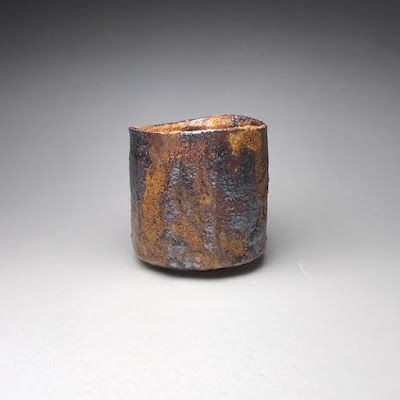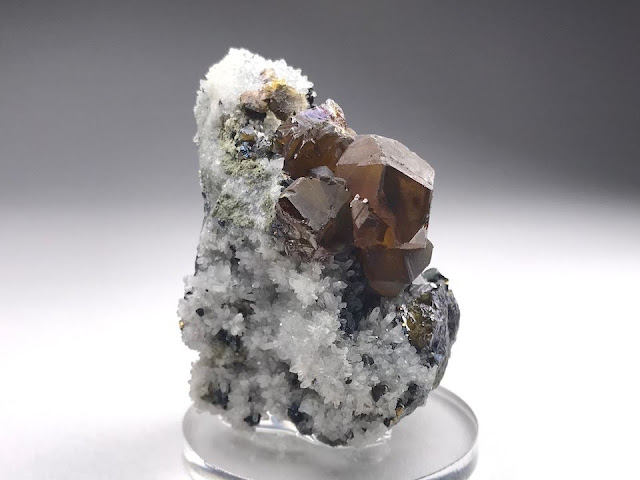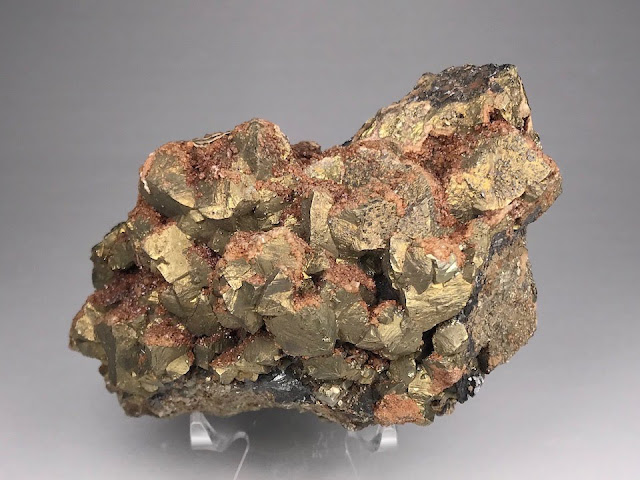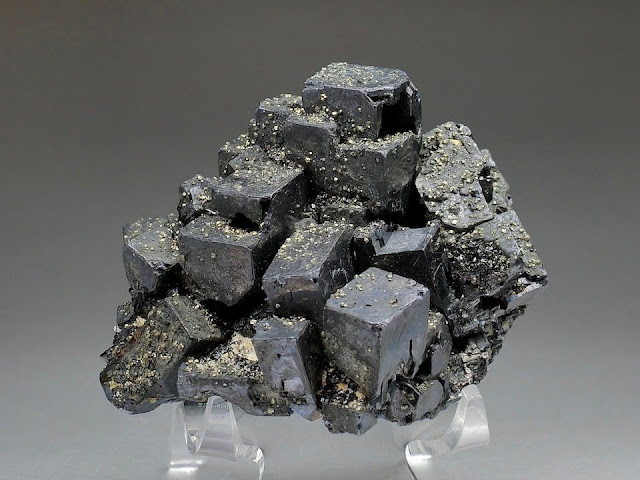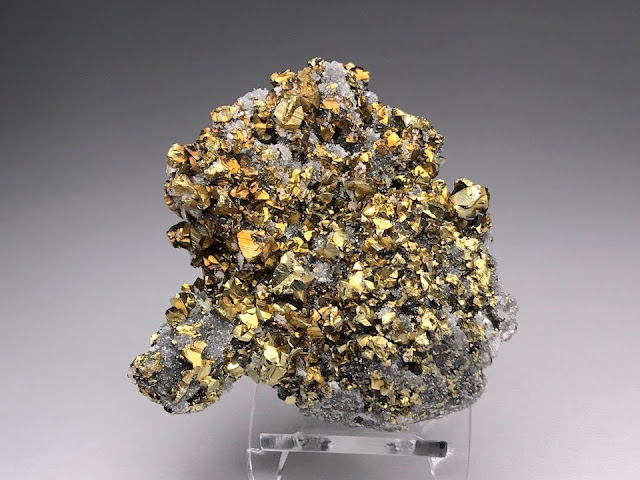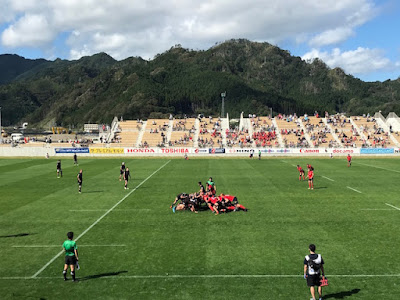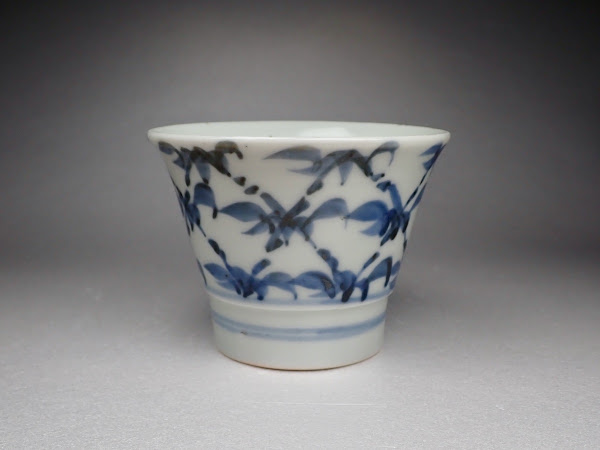埼玉県秩父市中津川 秩父鉱山 大黒鉱床 Daikoku Deposit, Chichibu Mine, Nakatsugawa, Chichibu City, Saitama, Japan 幅 width 100 mm / 重さ weight 554 g 塊状の硫化鉱の上に黒い閃亜鉛鉱がついて、その上に大粒の黄銅鉱が群生する。黄銅鉱の上には、さらに方解石や、鉄をふくんだ炭酸塩(菱鉄鉱かアンケル石か)の細かい結晶がふりつもっている。 すでに紹介した閃亜鉛鉱標本 と同じ産地で、雰囲気が似ている。黄銅鉱は一般に四面体状に結晶することが多い。しかしこの標本は、正確な結晶面は同定しがたいが、偏菱十二面体に分類されるものが多いように思われる。そしてそういう結晶は、鏡面のようなはっきりした反射でなく、光の当たり具合によって、ぼやっとしたなんとも言えない輝きをみせるのである。「ビロード状」とか「月光のような」とかいう形容があるが、それに近い。なお、そうした輝きをみせるものはとくに足尾産が有名で、たとえば 砂川一郎「足尾図幅内に産する鉱物」(1955) や 地質調査所編「Introduction to Japanese Minerals」(1970)を参照のこと。 Large chalcopyrite crystals grow on a matrix of sphalerite and pyrite. Small calcite and some brown carbonates (siderite or ankerite) are scattered. From the same locality as a previously shown sphalerite specimen . Most crystals form dodecahedron, which shines like a velvet or a moon light. Ashio mine in Japan is renowned for such subtly shining chalcopyrite (see "Introduction to Japanese Minerals", Geological Survey of Japan, 1970). もうひとつこの...
